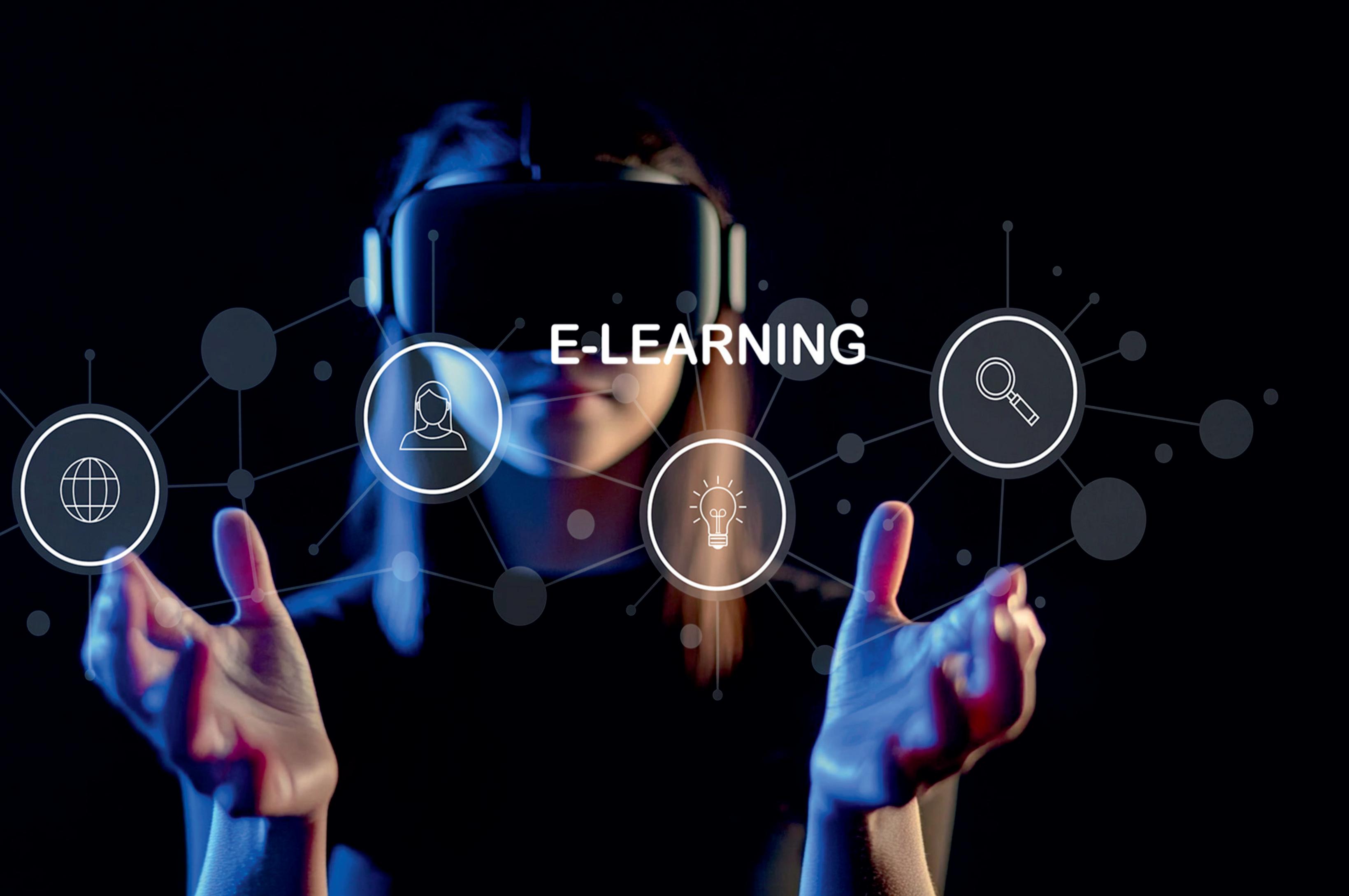






Someindividualsdon’tjustcontributetotheirfield—theyhelpredefineit.Richard
C.Larsonisonesuchfigure.Knowntomanyas“Dr.Larson,”heisfarmorethana professor,innovator,orthoughtleader.Heisapioneerwhoselifelongdedicationto knowledge,systemsthinking,andtransformativeeducationhasinspiredgenerationsof learners,researchers,andglobalchange-makers.
Thisspecialfeature, The Lifelong Pursuit of Knowledge and Innovation Through Richard C. Larson's Vision,isnotjustatribute—it’sawindowintotheunwaveringcuriosityand commitmentthathavedefinedhisjourney.Fromhisearlyworkinoperationsresearchand urbansystemstohisglobalimpactonSTEMeducation,ProfessorLarsonhasconsistently viewedtheworldnotonlyasitisbutasitcouldbe—withbettersystems,equitableaccess tolearning,andempoweredmindscapableofsolvingreal-worldproblems.
AtMIT,hislegacyspansdecades,buthisinfluencegoesfarbeyondcampusboundaries. HisleadershipattheLearningInternationalNetworksConsortium(LINC),hispioneering researchinqueuingtheory,andhisrelentlessadvocacyforeducationalinnovationin underservedregionsspeakvolumesaboutamissiondrivennotbyaccolades,butby purpose.
WhatmakesRichardLarson’sstoryremarkableisn’tjustthebreadthofhis accomplishments—it’stheclarityofhisvision:thateducationmustevolve,that technologymustservehumanity,andthattrueprogressliesinempoweringotherstothink criticallyandactethically.
Thisfeaturecapturesnotonlyhisachievementsbutalsothevaluesbehindthem.Itisa celebrationofalifedevotedtoideasthatmatterandsolutionsthatendure.Throughevery initiative,paper,classroom,andconversation,RichardC.Larsoncontinuestoprovethat thepursuitofknowledgeisnotadestination—it’salifelongjourney.
Wearehonoredtospotlighthisextraordinarypathandhopehisstoryencouragesothersto leadwithintellect,humility,andadrivetomaketheworldbetter—oneinsightatatime.



The Lifelong Pursuit of Knowledge and Innovation Through Richard C. Larson's Vision

EdTech and Equity: Innovation Without Exclusion
Trends Driving the Transformation of K–12 Education


Editor-in-Chief
Deputy Editor
Managing Editor
Assistant Editor
Visualizer
Art & Design Head
Art & Design Assitant
Business Development Manager
Business Development Executives
Technical Head
Assitant Technical Head
Digital Marketing Manager
Research Analyst
Circulation Manager
David
Mia
Eric
Richard


































narapidlydigitizingworld, Itechnologypromisestorevolutionize education.Classroomsarenolonger boundbywalls;learningcannowhappen anytime,anywhere.FrompersonalizedAI tutorsandinteractiveplatformstovirtual realityfieldtrips,theEdTechrevolutionis here—andit'srewritingthewaystudents learn,teachersteach,andinstitutions evolve.
Butastheworldracestoadoptthenextbig innovation,animportantquestionrisesto thesurface:Whogetsleftbehind?
ThebenefitsofEdTechareundeniable. Adaptiveplatformsofferreal-timefeedback tailoredtoindividuallearners.Data analyticshelpeducatorsidentifystruggling studentsfaster.Gamifiedcontentboosts engagementandretention.Andforschools stretchedthinonresources,digitaltools offerascalablesolutiontoenhancelearning outcomes.
Yet,amidallthispromiseliesahardtruth:Innovationdoes notguaranteeinclusion.
Millionsofstudentsaroundtheworld—especiallythose frommarginalized,rural,oreconomicallydisadvantaged backgrounds—lackaccesstotheverytoolsEdTech assumes.Nointernet,nodevices,nodigitalliteracy support.Thesametoolsdesignedtocloselearninggaps mayinadvertentlybewideningthem.
DigitalDivideisaHumanDivide
Equityineducationhasalwaysmeantensuringthatevery child,regardlessofbackground,ability,orzipcode,has accesstoqualitylearning.Butintoday’scontext,equity alsomeansaccesstoconnectivity,devices,anddigital confidence.
Thedigitaldivideisnotjusttechnological—it’sdeeply human.Itshowsupinhomeswhereparentscan’t troubleshootonlineplatforms,wheresiblingsshareasingle smartphoneforhomework,orwherestudentsmissschool entirelybecausetheycan’tlogin.
EdTechwithoutequityisnotprogress—it’sprivilege.
IfwearetobuildaninclusiveEdTechfuture,wemust designfromthemargins,notthecenter.Thatmeanscocreatingtoolswithinputfromunderservedcommunities.It meansbuildingofflinefunctionalityforremoteareas, multilingualcontentfordiversepopulations,andintuitive interfacesthatdon’trequireatech-savvyguardianto navigate.
Italsomeansrethinkingwhoinnovationserves.Thebest EdTechsolutionsaren'tjustthosewithsleek interfaces—they'retheonesthatadapttodifferentcontexts, empowerlocaleducators,andleveltheplayingfieldfor thosefurthestfromopportunity
AddressingEdTechequityisn’tjustaboutbuildingbetter apps—it’saboutbuildingbetterecosystems.Governments, NGOs,andprivate-sectorinnovatorsmustworktogetherto createinfrastructurethatsupportsinclusivelearning.That includessubsidizedinternet,devicegrants,communitytech hubs,andteachertrainingondigitaltools.
LeadersintheEdTechspacemustbeintentional—notjust aboutscale,butaboutreachandrelevance.Equitymustbe adesignprinciple,afundingpriority,andasuccessmetric.
Equitygoesbeyondaccess—it’saboutempowerment. Givingstudentsalaptopisonlystepone.TrueEdTech equityisachievedwhenlearnersfeelrepresentedinthe content,confidentusingthetools,andmotivatedbythe possibilitiestechnologyopensupforthem.
It’swhenastudentinaruralvillagecanexplorethesolar systeminvirtualreality Whenaneurodiverselearnerfinds aplatformthatunderstandstheirpace.Whenateacherinan underfundedschoolcancollaboratewithglobalpeersatthe clickofabutton.
That’swheninnovationbecomestruly transformative—becauseitincludeseveryone.
Thefutureofeducationisundeniablydigital.Butitmust alsobedeliberatelyequitable.
Innovationwithoutexclusionrequiresvigilance.Itrequires empathy.ItrequiresEdTechleaders,educators,investors, andpolicymakerstoask: Are we building for the most privileged, or for the most impacted?
Ifwewanttoharnessthefullpoweroftechnologyto transformeducation,wemustensureitliftseverylearner, notjusttheoneswhocanaffordtoplugin.
Becauseintheend,thetruetestofEdTech’simpactwon’t behowadvancedourtoolsare—buthowinclusiveour futurebecomes. CIO

K–12educationisundergoingaprofound
transformation—onethatextendsbeyonddigital toolsorremoteclassrooms.Fueledbyshifting societalexpectations,technologicaladvancements,and post-pandemiclearnings,today’sclassroomsarebeing reimaginedintoagile,inclusive,andstudent-centered ecosystems.Thetraditional,one-size-fits-allmodelof educationisrapidlygivingwaytopersonalized, experiential,andfuture-focusedapproaches.
Thisshiftisnotjustaboutinnovationforinnovation’s sake—it’saboutequippingstudentswiththeskills, mindsets,andresiliencethey’llneedtothriveinaworld definedbyrapidchange.Below,weexplorethemost impactfultrendsdrivingthetransformationofK–12 education.

PersonalizationisattheforefrontoftheK–12revolution. Today’seducatorsareincreasinglyleveragingdataand digitalplatformstotailorinstructionbasedoneach student’sstrengths,challenges,interests,andpace.Adaptive learningtoolsusealgorithmstoadjustcontentinreal-time, providingsupportorenrichmentasneeded.
Thistrendmovesawayfromrigidcurriculumsand standardizedpacing,makingroomforstudentagency, differentiatedinstruction,andmoreequitablelearning outcomes.
Whileremotelearningduringthepandemicwasbornoutof necessity,ithasleftalastingimprintoneducationdelivery

Schoolsarenowembracinghybridmodelsthatcombineinpersoninstructionwithdigitalcomponents,allowingfor greaterflexibilityandaccessibility
Fromflippedclassroomstoasynchronousassignments, hybridlearningenablesstudentstotakemoreownershipof theirlearningwhiledevelopingtimemanagementand digitalcollaborationskills—essentialforthemodernworld.
EdTechisnolongerasupplement;it'sacorecomponentof teachingandlearning.Interactivewhiteboards,learning managementsystems,VR/ARapplications,gamified assessments,andAI-driventutoringarebecoming commonplaceinclassrooms.
However,theemphasishasshiftedfromusingtechnology asanoveltytoembeddingitstrategicallytosupportdeep learning.Simultaneously,K–12educationisprioritizing digitalfluency,teachingstudentsnotjusthowtousetools, buthowtothinkcritically,collaborateonline,andnavigate digitalenvironmentsresponsibly.
Insteadoftime-basedprogress,competency-based educationfocusesonstudentsadvancingafter demonstratingmasteryofspecificskillsorknowledge.This modelallowsfordeeperlearning,remediationwithout stigma,andaccelerationwhenappropriate.
CBEalignscloselywithreal-worldexpectations,preparing studentsforfuturecareersbyemphasizingoutcomes, problem-solving,andskilltransferoverrotememorization.
Theholisticdevelopmentofstudentshasgainedurgency Educatorsareplacingmoreemphasisonsocial-emotional learning(SEL),mentalhealth,andstudentwellbeing. Curriculaarebeingexpandedtoincludemindfulness, empathy,emotionalregulation,andresilience.
Schoolsarealsoinvestingintrauma-informedpracticesand integratingmentalhealthprofessionalsintotheeducation ecosystem,ensuringstudentsaresupportednotonly academically,butemotionally
Real-world,hands-onlearningisincreasinglyreplacing passiveinstruction.Project-basedlearning(PBL)fosters criticalthinking,creativity,andcollaboration—skillsthat areessentialforthe21stcentury.
Throughinterdisciplinaryprojects,studentstacklereal problems,conductresearch,andpresent solutions—buildingnotonlyacademicknowledgebutalso communicationandleadershipskills.PBLalsoreinforces relevance,helpingstudentsconnectclassroomlearningto theirlivesandfuturecareers.
Educationalequityisnotjustamoralimperative—it’sa structuralfocusinK–12transformation.Leadersare reexaminingpolicies,curricula,andteachingpracticesto ensureinclusiveenvironmentsforalllearners,especially marginalizedorunderrepresentedgroups.
Culturallyresponsiveteachingpracticesarebeingadopted toreflectstudents’backgrounds,affirmidentities,and combatsystemicbiases.Technologyisalsobeingleveraged tobridgethedigitaldivide,ensuringthatallstudents, regardlessofzipcode,haveaccesstohigh-qualitylearning experiences.
K–12educationisincreasinglyfocusedonpreparing studentsforlifebeyondschool—whetherthat’shigher education,vocationaltraining,orenteringtheworkforce. Curriculanowincludecareerandtechnicaleducation (CTE),coding,entrepreneurship,andfutureskillssuchas adaptability,collaboration,andmedialiteracy
Byexposingstudentsearlytovariouscareerpathsand skills,schoolsarehelpingthemmakeinformedchoicesand adapttotheevolvingdemandsoftheglobaleconomy
Artificialintelligenceistransforminghoweducatorsassess, intervene,anddesigninstruction.AI-poweredplatforms providereal-timeanalyticsonstudentperformance, enablingearlyinterventionsandpersonalizedpathways.
Fromautomatingadministrativetaskstopowering intelligenttutoringsystems,AIallowsteacherstofocus moreonrelationalteachingandlessondata crunching—bringingefficiencyandinsighttotheforefront ofinstructionaldesign.
SustainabilityeducationisgainingtractioninK–12schools, reflectinggrowingstudentinterestinclimatechangeand ecologicalresponsibility.Curriculumisincreasingly integratedwithenvironmentalliteracy,outdoorlearning, andsustainabilityprojects.
Thistrendnotonlypreparesstudentstoaddressglobal challengesbutalsofostersasenseofstewardshipandcivic responsibility,makingthemactiveparticipantsinshapinga sustainablefuture.
Conclusion:AFuture-FocusedVisionforK–12
K–12educationisnolongerconfinedtotextbooksand desks—it’saliving,evolvingecosystemshapedbyglobal shiftsandlocalneeds.Thetrendsdrivingthis transformationarenotjustfleetingchanges,butsystemic reimaginingofwhateducationcanandshouldbe.
Attheheartofthisevolutionliesacommitmenttostudentcentered,equitable,andfuture-readylearning.Asthese trendsconverge,theschoolsthatthrivewillbethosethat embraceinnovationnotasachallenge,butasan opportunitytobuildresilient,curious,andempowered learnersreadytoleadtomorrow’sworld.


